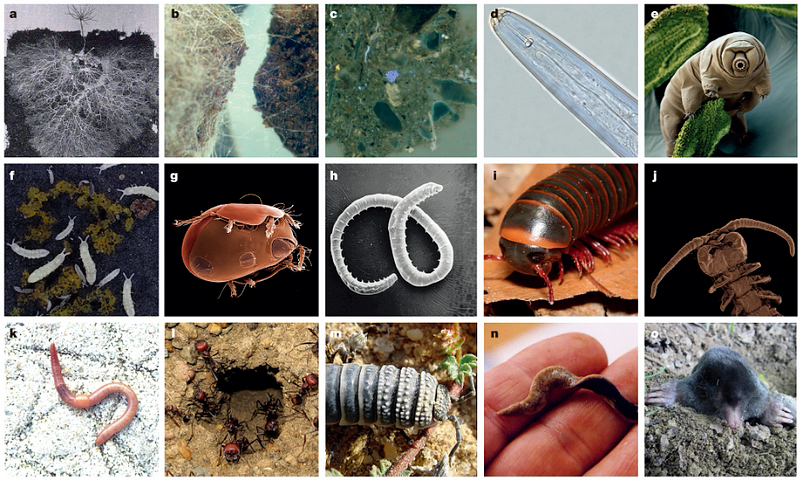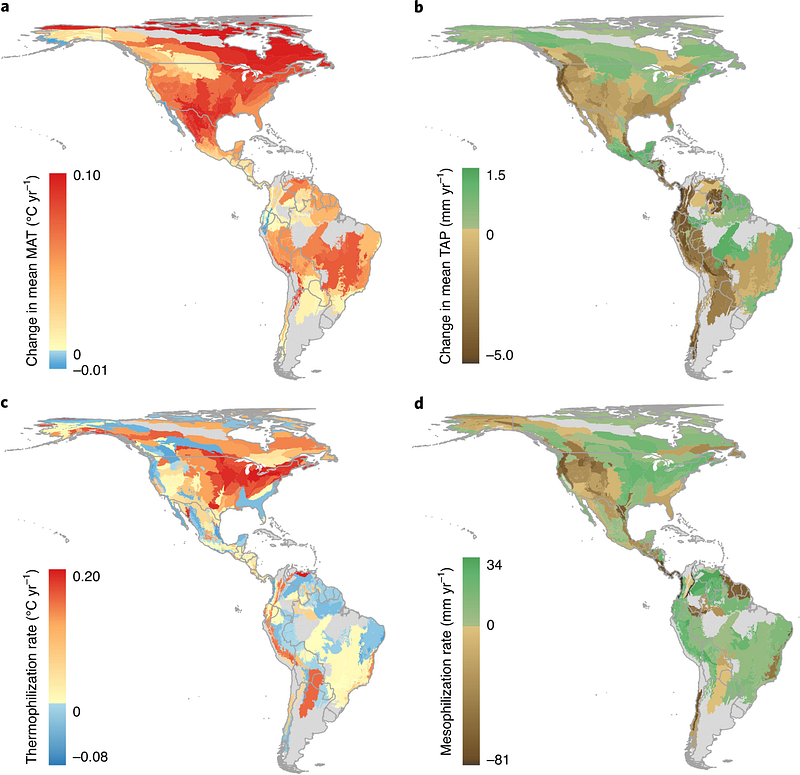The Hidden Heroes of Climate Resilience: Soil Decomposers
Written on
Chapter 1: The Importance of Decomposers
Think back to your last stroll through a forest. Can you recall the wildlife you encountered? Perhaps you spotted deer, squirrels, or even a bear in the distance. For those with an interest in flora, the trees, shrubs, flowers, moss, and mushrooms might stand out.
Yet, we often overlook a crucial aspect of this environment. Beneath our feet lies an intricate ecosystem filled with minuscule organisms that break down fallen leaves and other organic matter—nature's very own recycling system. This process, known as decomposition, is essential for the vitality of ecosystems. It returns nutrients to the soil, enabling plants to flourish. Additionally, these decomposers play a critical, though often underestimated, role in regulating our climate.
In discussions about climate change, we frequently hear that the crises of climate change and species extinction are intertwined. Ignoring one while addressing the other will not yield effective solutions. Unfortunately, conservation initiatives tend to focus on larger, more charismatic species. However, every organism in an ecosystem fulfills a role, and the removal of any species—regardless of its size—can lead to unforeseen consequences. This is particularly true when it comes to decomposers.
Section 1.1: The Ecosystem of Decomposers
Various organisms contribute to the process of decomposition (See Figure 1). From single-celled organisms to larger vertebrates, these different life forms create a complex network that is vital for efficient decomposition. They rely on one another to complete the cycle.

Figure 1: A selection of organisms in the soil food web, including fungi, bacteria, and various invertebrates.
However, climate change poses a significant threat to this delicate web (See Figure 2). Anyone who has tried composting knows that decomposers like bacteria and insects are particularly sensitive to temperature and moisture. If conditions become excessively hot or dry, these organisms may slow their processes or perish. Consequently, dead plant material accumulates, nutrient cycling halts, and the ecosystem faces collapse—a state that can be described as ecological “famine.”
Moreover, different soil ecosystems have evolved to decompose specific types of plant life. As climate shifts occur, forests are undergoing changes in plant composition, which can disrupt the entire decomposer network (See Figure 3). The plants that decomposers have adapted to may no longer exist, and new species may not be suitable for decomposition.
To effectively manage and mitigate the impacts of global climate change, it is essential to understand these dynamics. Researchers are actively studying how decomposer communities can assist ecosystems in adapting to various climatic challenges, such as drought.

FIGURE 2: Belowground responses and feedbacks triggered by climate change.
Chapter 2: Research Insights on Decomposers and Drought
In a recent investigation led by Dr. Junwei Luan, experiments were conducted across various forest biomes in China, ranging from temperate to tropical climates. Researchers manipulated rainfall levels to simulate drought conditions and assessed how the biodiversity of decomposers and plant species influenced the decomposition process. Their objective was to determine whether a more diverse ecosystem could withstand drought better.
The findings revealed that an increased diversity of decomposers, particularly larger organisms like millipedes and isopods, could mitigate the slowdown in decomposition caused by drier conditions. Additionally, while a variety of leaves on the forest floor contributed to improved decomposition, this effect was less pronounced compared to the benefits of a diverse decomposer community.

The researchers established plots across five forest types, some experiencing reduced rainfall and others with normal conditions. They examined how various combinations of decomposers, from microorganisms to larger invertebrates, affected decomposition rates.
Results indicated that drier conditions indeed slowed down decomposition, but this effect was less severe in areas with a broader range of decomposers, especially larger species. The study also highlighted that a diverse array of leaves could marginally enhance decomposition rates, as different leaf types decompose at varying speeds and provide a balanced diet for decomposers.
Section 2.1: Biodiversity's Role in Ecosystem Resilience
This research underscores a pivotal insight: greater biodiversity among decomposers and fallen leaves can help buffer the adverse effects of climate-driven droughts.
Why is this important? Decomposition is a vital process for the health of forests, returning nutrients to the soil, which in turn supports tree growth. Healthy forests sequester atmospheric carbon dioxide, a potent greenhouse gas. A slowdown in decomposition could have detrimental effects on the entire ecosystem, exacerbating climate change.
The findings suggest that by prioritizing soil and plant biodiversity in forest management, we can bolster forests' resilience to future droughts. Strategies might include planting diverse tree species together and safeguarding decomposer populations.

Figure 3: Geographic patterns in climate change and shifts in plant communities.
The intricate balance of life within an ecosystem is maintained by a complex web of interactions. Every species, from towering trees to microscopic organisms, plays a crucial role. Rapid climatic changes disrupt this equilibrium, pushing various species toward extinction. However, the consequences extend beyond the large, charismatic animals we often admire. The hidden world of decomposers performs an essential role by recycling nutrients in our forests. Their extinction could significantly hinder nutrient cycling, impacting plant growth and the entire ecosystem.
This interconnectedness of life highlights the necessity for conservation efforts that extend beyond protecting charismatic species. Every organism, visible or not, contributes to the overall health of our planet. Safeguarding biodiversity is not merely about protecting individual species; it involves preserving entire ecosystems. By fostering biodiversity, we enhance our ecosystems' ability to adapt and thrive in the face of climate change. So, during your next forest visit, remember to look not just upwards but also downwards, recognizing the hidden world beneath your feet.